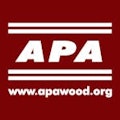Measuring the environmental performance of engineered wood products
One of the most commonly accepted methods of analyzing a product’s environmental impacts is life cycle assessment. An LCA is a comprehensive measure of the total environmental impact of a product, assembly or structure. True to its name, LCA is a holistic measure that examines the entire life cycle of a product, start to finish. Life cycle assessment measures energy expended during all aspects of service life, encompassing raw material extraction, manufacture, distribution, use, maintenance and disposal.
Wood’s environmental impacts versus other materials
LCA measurements show that solid wood and engineered wood consistently outperform steel and concrete in terms of environmental sustainability. Wood’s numerous comparative advantages include less energy consumption during production, less greenhouse gas emissions, less air and water pollution and less solid waste production.
A 2015 Australian study compared the life cycle environmental impacts of two apartment structures, one constructed with a lightweight timber frame and the other with concrete. The study measured factors ranging from greenhouse gas emissions to release of chemicals, which contribute to acid rain. The wood structure scored better in three of the five categories, with most of the impacts occurring during an assumed 60-year service life. The study concluded that wood construction provides a more environmentally friendly building option over the life of a building. The study also found that much of the environmental advantage of the wood option was due to its lightweight design—a design benefit that offers many advantages, including cost savings. (Forest & Wood Products Australia, “A Comparative Life Cycle Assessment of Two Multi Storey Residential Apartment Buildings," July 2015.)
LCA tools
Two popular tools for estimating LCA include the Athena Environmental Impact Estimator and the Building for Environmental and Economic Sustainability (BEES) software, which also includes an economic performance score.
Environmental Product Declarations (EPDs) and EPD Transparency Briefs
Even with advanced LCA tools, sustainability is sometimes difficult to quantify. Environmental Product Declarations (EPDs) provide building teams with science-based information on environmental impacts to facilitate more informed building material choices.
In compliance with ISO 14025, Environmental Labels and Declarations, an EPD gives a third-party verified evaluation of a product’s environmental performance, including global warming potential, primary energy consumption, material resources consumption, non-hazardous waste generation, acidification potential, smog potential and other measures.
Because EPDs are often lengthy, EPD Transparency Briefs were developed to provide a shorter, more readable summary of the most critical data in an EPD: the third-party verified, life-cycle based product data that is used in green building certification and rating systems.
The American Wood Council (AWC) publishes EPDs and EPD Transparency Briefs for LVL, wood I-joists, softwood plywood, OSB, glulam, softwood lumber and other wood products.
APA Green Verification Reports
APA Green Verification Reports help building officials and design professionals determine a product's eligibility for points under recognized green building standards.
Green Verification Reports consist of a checklist designed to help document the compliance of individual engineered wood products manufactured under a quality program audited by APA to specific international, national or industry recognized green building standards, including ICC 700-2015, ICC 700-2012, ICC 700-2008, LEED v4, 2009 LEED and 2009 LEED Canada.
Learn more about the environmental benefits of engineered wood products at > https://www.apawood.org/green-building.
About the Author

APA – The Engineered Wood Association
For over 85 years, APA – The Engineered Wood Association has focused on helping the industry create structural wood products of exceptional strength, versatility and reliability. Combining the research efforts of scientists at APA’s 42,000 square-foot research with the knowledge gained from decades of field work and cooperation with our member manufacturers, APA promotes new solutions and improved processes.

